What is the erogenous zone of a cat ?
What is the erogenous zone of a cat ?
Cats don't have single "erogenous zone" like humans, but several areas they enjoy being touched, mostly focused on the head and face. Think cheeks, chin, behind ears, and gentle ear scratches! However, avoid the tummy and base of the tail, as it can be overstimulating. Pay attention to your cat's body language while petting to ensure they're happy and relaxed.
Meow-ve Over, Belly Rubs: Unveiling the Elusive Erogenous Zones of Felines
Cats, those enigmatic bundles of fur and purrs, have long held us captive with their captivating personalities and independent streaks. But beneath their aloof exterior lies a secret world of pleasure points we humans often stumble upon (sometimes literally) – their erogenous zones. Today, we'll embark on a purr-spective journey to unveil these hidden treasure troves of feline satisfaction.
Beyond the Belly: Why Scratching the Base Ain't the Base
For years, the cat's tummy reigned supreme as the ultimate cuddle spot. Turns out, it's more of a trapdoor to claws and hisses than a gateway to purrs. The truth is, the area around the base of the tail holds a plethora of scent glands, making it a highly sensitive (and sometimes overstimulating) zone. So, while a gentle stroke might be met with delight, a persistent scratch could lead to an abrupt exit for your hand.
Head Honchos: Where Scents and Stroking Combine
But fear not, cat cuddlers! Headquartered around the face, particularly the cheeks, chin, and behind the ears, lie veritable nerve centers of feline bliss. These areas boast dense concentrations of scent glands, making them prime targets for gentle head-butts and soft strokes. Think of it as a feline spa treatment, releasing calming pheromones and leaving your kitty in a state of purrfect serenity.
Don't Forget the Fur-ocious Five:
Ears: A light scratch behind the ears can send your kitty into a blissful ear-twitching frenzy. Proceed with caution though, as some felines prefer a hands-off approach.
Paws: Those delicate toe beans aren't just adorable – they're also incredibly sensitive. A gentle m***age between the toes can be met with happy paw-twitches and kneading.
Cheeks: Mimicking the grooming behavior of other cats, a gentle rub on the cheeks can trigger purrs and head-butts.
Neck: A slow stroke down the side of the neck can be deeply calming for some cats, but always watch for body language cues to avoid overstepping.
Back: A scratch along the spine, from head to tail, can be a soothing experience for most felines, especially when combined with a gentle m***age.
Bonus Round: Unlocking the Secrets of Cat Communication
Remember, every cat is an individual with unique preferences. Pay attention to their body language – tail swishes, relaxed postures, and purrs are good signs, while flattened ears, dilated pupils, and hissing are indicators to stop. Start slow, observe their reactions, and let your kitty guide you to their purr-sonal pleasure map.
Frequently Asked Feline Flirting Questions:
Q: Does my cat enjoy being petted at all?
A: While individual preferences vary, most cats do enjoy some form of affection. Observe their behavior and respect their boundaries to build a trusting relationship.
Q: What if my cat doesn't purr when I pet them?
A: Purring isn't the only sign of contentment. Look for relaxed eyes, slow blinking, and body language that indicates they're enjoying your touch.
Q: Can I pet my cat's belly all the time?
A: Tread carefully! Some cats tolerate belly rubs, while others see them as an invasion of privacy. Start with gentle strokes and respect any signs of discomfort.
Q: Is it bad to overstimulate my cat's erogenous zones?
A: Yes, overstimulation can lead to anxiety and aggression. Pay attention to their body language and stop the petting if they seem overexcited.
By understanding the secrets of feline erogenous zones, you can deepen your bond with your cat and shower them with purr-sonalized affection. So, ditch the belly rubs and explore the hidden realms of head scritches and ear whispers. Your kitty, and your relationship, will thank you for it!
Now go forth, armed with newfound knowledge, and unlock the purrfectly pleasurable life your feline friend deserves. May your days be filled with kneading paws, rumbling snores, and the sweet symphony of happy cat purrs!
Where do cats like to be scratched (besides the belly)?
While the belly can be a tempting target (especially when those fluffy rolls are begging to be rubbed!), most cats aren't huge fans of belly rubs. It's a vulnerable area, and their instinct kicks in to protect it. But fear not, scratch-starved humans! Cats have plenty of other "happy zones" that welcome a good scritch session. Here are a few top contenders:
- The head and face: This area is packed with scent glands, making it a prime spot for gentle strokes and ear whispers. Scratch behind the ears, under the chin, or on the cheeks, and watch those purrs erupt!
- The neck and back: A slow, gentle scratch down the neck or along the spine can be incredibly soothing for most cats. It mimics the way they groom themselves and can trigger a wave of purring contentment.
- The base of the tail: While the very tip might be off-limits, a gentle scratch near the base of the tail can be quite enjoyable for some felines. Just be mindful of their body language and stop if they seem uncomfortable.
Do cats enjoy ear scratches? How can I tell if it's too much?
Ear scratches are often a feline favorite! The thin skin behind their ears is packed with nerves, making it a highly pleasurable spot. A light scratch or gentle m***age can send them into a blissful ear-twitching frenzy. Just keep these things in mind:
- Start slow and gentle: Don't go in with a heavy hand. A light touch is key to avoiding overstimulation.
- Pay attention to body language: Watch for signs of enjoyment like relaxed eyes, slow blinking, and purring. If they flatten their ears, hiss, or swat, it's time to stop.
- Respect individual preferences: Some cats adore ear scratches, while others prefer they be left alone. Observe your furry friend and cater to their unique likes and dislikes.
Is it okay to pet a cat's paws? What about their tail?
Tread carefully with these areas! Paws are incredibly sensitive, and most cats don't appreciate being touched there. It's like someone poking around between your toes – not exactly the height of relaxation. As for the tail, it's an extension of their spine and plays a crucial role in balance and communication. Sudden touches can startle them, so it's best to stick to the head, neck, and back for petting.
Does head-butting mean a cat wants to be petted? What are other signs of affection in cats?
Head-butting is definitely a sign of affection in cats! It's their way of marking you with their scent and showing you they like and trust you. Other feline love languages include:
- Slow blinking: This "kitty kiss" is a sign of contentment and trust. If your cat blinks at you slowly, it's saying, "I feel safe and happy with you."
- Kneading: Those rhythmic paw movements on your lap or blanket are a throwback to kittenhood and nursing. It's a sign of comfort and happiness.
- Purring: The ultimate purr-formance of feline affection! While not always a guarantee of happiness (some cats purr when stressed), a rumbling purr usually means your kitty is feeling good.
How can I tell if my cat is enjoying being petted?
Reading your cat's body language is key! Look for these signs of contentment:
- Relaxed posture: Loose muscles, a soft tail, and a contented expression are all good indicators.
- Purring: Of course, the purr is a cl***ic sign of feline happiness.
- Head bunting and slow blinking: These affectionate gestures say it all.
- Kneading: Those rhythmic paw movements can be a sign of purring contentment.
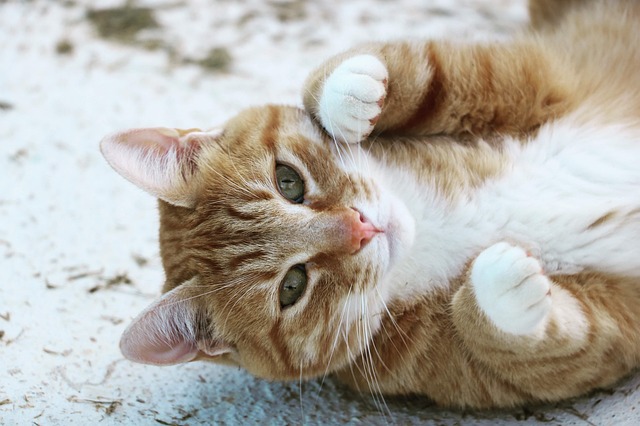

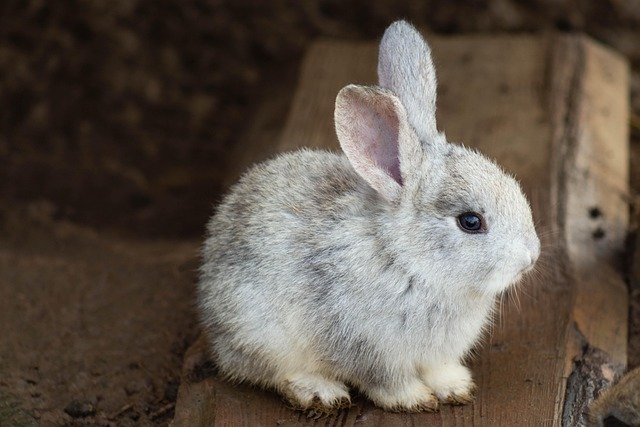
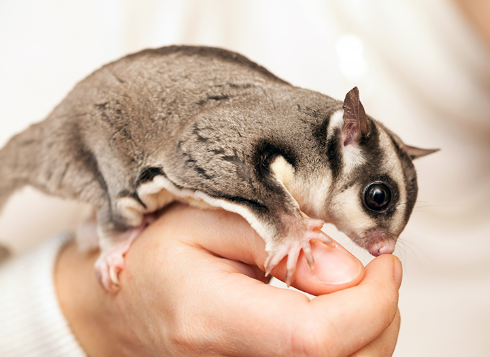



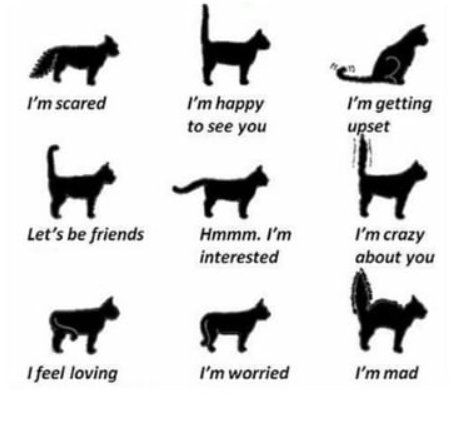
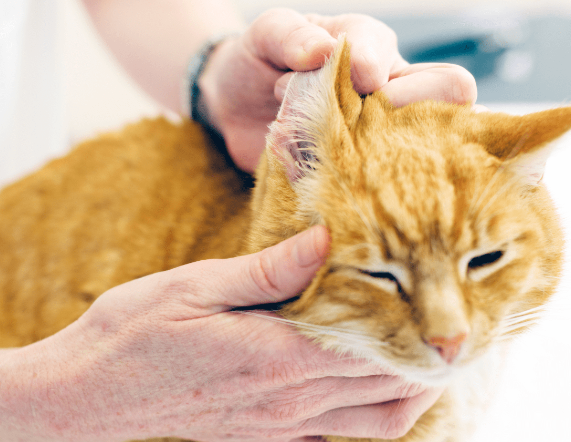







Leave a comment